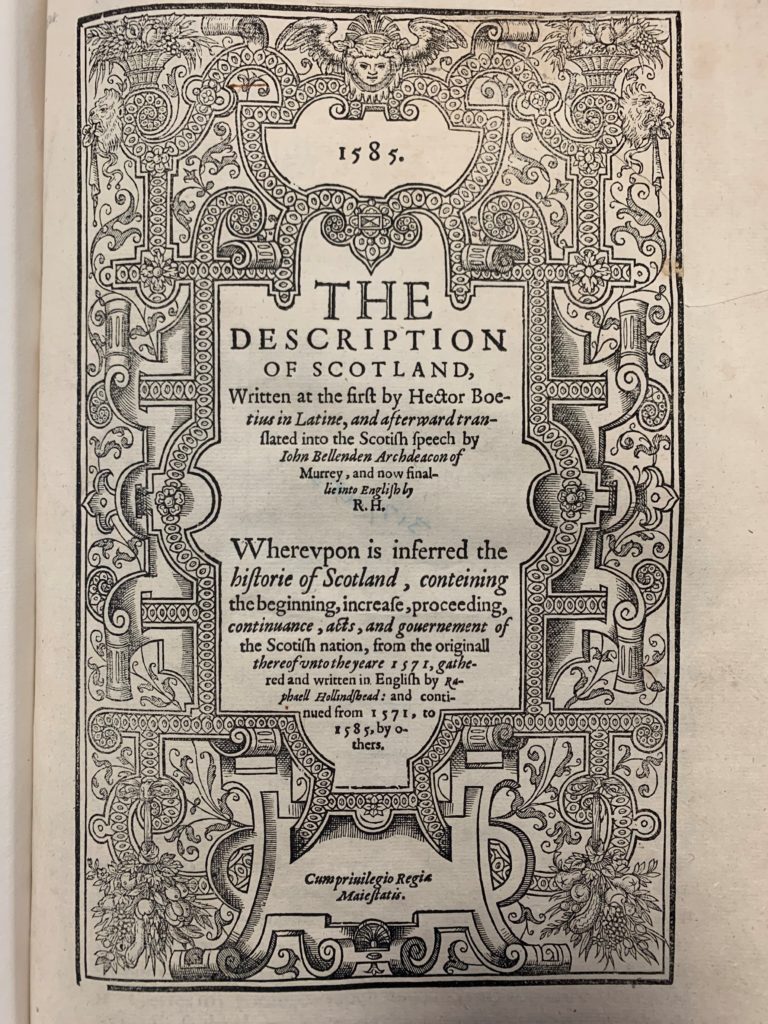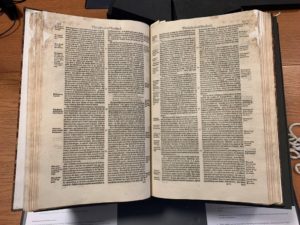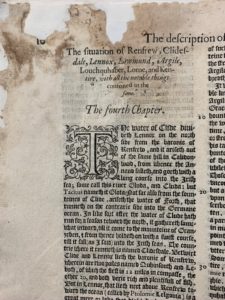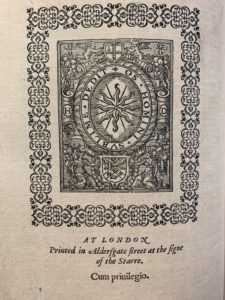Holinshed’s Chronicles: A Window into the 16th Century Discussion of Scottish History
‘Still it cried ‘Sleep no more!’ to all the house:
‘Glamis hath murder’d sleep, and therefore Cawdor
Shall sleep no more; Macbeth shall sleep no more.’’
Macbeth, Act 2, Scene 2
Whilst the story of Macbeth conjures up an instant image of William Shakespeare, the actual historical inspiration behind one of The Bard’s most famous tragedies comes from Raphael Holinshed’s Chronicles of England, Scotland and Ireland.
In this final post of our mini-series of posts by students, Meredith discusses her encounter with this book published towards the end of the lifetime of Mary Queen of Scots.

The multi-volume collaborative work provides a cohesive explanation of Scottish, English, and Irish history. It is titled on the spine: Boetius’s Chronicle of Scotland 1587. The University of St Andrews Library’s Special Collections’ nearly immaculate copy of the Chronicles, which was printed with royal privilege at Aldersgate, London in 1587, features some slight water damage. It is held within the Typographical Collection (TypBL.B87DB). The Library also holds a second copy of volume 2. Hector Boece or Boethius was the first Principal of King’s College, Aberdeen and his History had been originally published in Paris in 1527 at the author’s expense, later being translated into English by Bellenden. Bellenden’s printed text circulated quite widely, not least to the compilers of Holinshed’s Chronicles, and hence to Shakespeare.

This volume was rebound in the 19th century, the leather cover featuring detailed tooling as well as gold along the spine. The end papers are made of marbled paper, but the original paper sheets have not been trimmed, all signifying that the owner at the time recognised the work’s importance. The book does not have many notes or writing in it, which also speaks to its value. It could also hint to the fact that it was possibly not read much or alternatively was cleaned well during the 19th century. The book is quite large, with the sheets not only having two large columns of text but also a great deal of white space present. The amount of blank space on the pages mean this would have been quite expensive. Not meant to be portable, the large size of the volume means that it would have sat in a study or library and the owner would not have had to be secretive about its possession; a book this size would be quite difficult to conceal!

Records of Cambridge students purchasing the Chronicles reflect how these volumes became an integral part of the education of young gentlemen, providing them with a cohesive understanding of personal history. Favoured by the nobility, these expensive publications would be a prized possession and treated with care.
The text is well decorated throughout, with small woodcuts and changes in font, factors which would increase production costs, take time, and overall escalate the quality and price of the book. The title pages feature complex prints with figures and crests, and uses roman, black letter, and italic typefaces. The printer is using this publication as an opportunity to show off.

Most of the text appears in a gothic font, as seen in Image 2. While the 1580s saw a shift in English printing to roman print over black letter, gothic was still customary at this time. However, as seen on the title pages (Images 1 and 4), different fonts are used to mark distinctions, such as new chapters or sections. Given that it was printed with royal privilege, there is an added sense of legitimacy regarding its publication.
The book came to the University with a handwritten note dated to the late-18th or early-19th century attached to the fly-leaves with a pin. Headed ‘From Quarritchs List’, it gives bibliographic information on Hector Boece’s Description of Scotland. Bernard Quaritch Ltd has sold rare books and manuscripts since 1847. While this does not give too much information of the provenance of this volume, it perhaps is a record of the owner working to build their collection in the area and reflects an interest in early modern Scottish history.

Meredith Ferneau
MO4807 Student, 2019/20
Hi. Was pleased to see this.. I have recently traced Raphael Holinshed as a great Uncle some times removed. Were we to be in St Andrews one day would we be able to see the book? We live in Scotland on the Isle of Coll. Kind regards Pauline.